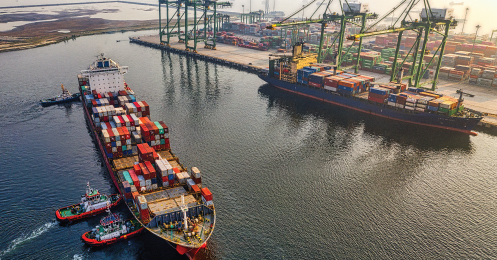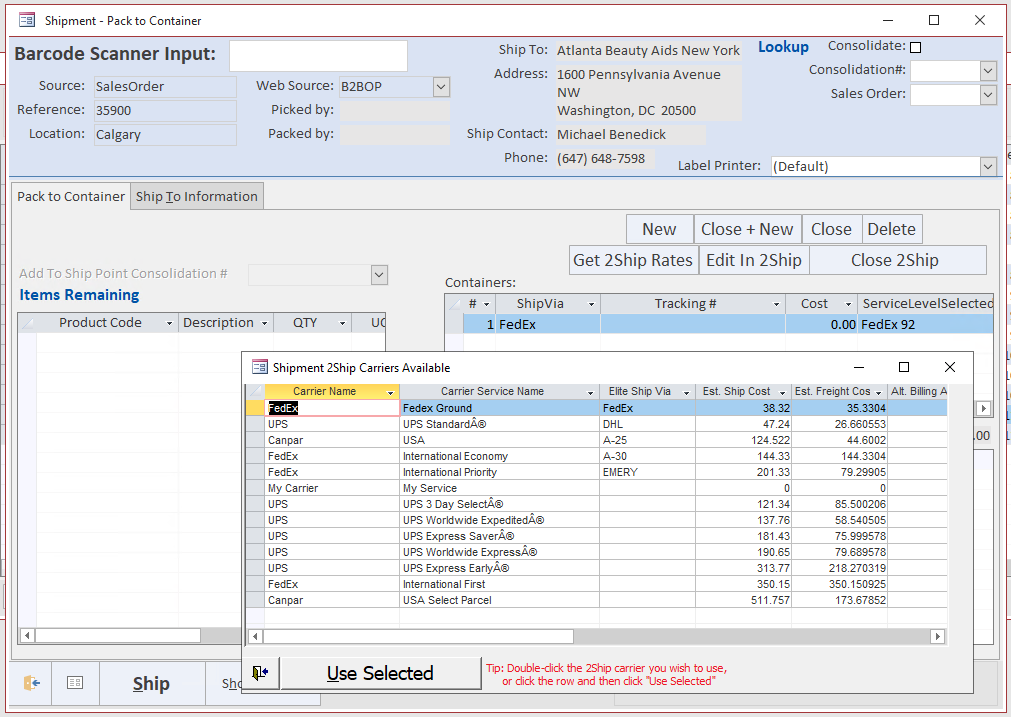I remember one year I was so busy during the holiday season that I bought all my friends and family’s gifts online. To my surprise, every single one of my purchases arrived on time and in perfect condition (no help from me as I ordered 10 days before Christmas). I received my orders so quickly and it occurred to me that I never thought to myself how this product made its way to my location. One item sent from Indonesia arrived here in Canada within 3 days! Since I had such a great experience with ordering those products, I knew I would order from those companies again. Whichever avenue your customers are buying from (eCommerce, phone, email etc.) choosing the right shipping method is going to take your customer’s experience from good to great. Consumers expect their product quick and undamaged so you will have to work with a carrier (or multiple) in order to achieve this. Choosing the right shipping method isn’t just for your customers but can also help you when shipping functionality is integrated directly into your ERP. Let’s look at how:
There are a few shipping methods to choose from including Air, Truck, LTL, and Ocean.
Air
One of the fastest shipping methods is by airplane but it is also one of the most expensive. Shipping via air is sometimes the best option if you’re shipping internationally and need your product to arrive quickly.
Ocean
Shipping via Ocean is a good alternative to air shipping when delivery is international. While it may take longer, costs are generally lower as a $200 ocean freight could cost five times more by air.
Truck
For heavy loads shipping via truck is your best option. Trucks can haul substantial weight and it limits loss or damage because it is usually going straight from the warehouse to the delivery location. According to CSA Transportation, the maximum gross weight a truck can legally transport across a U.S. interstate is 80,000 lbs. (approximately 36,300 kg) – that’s heavy!
LTL
LTL or less than truckload are considered relatively small freight in which the entire shipment from one company is not large enough to take up an entire truck. Since the truck is filled with shipments from different companies, it is not uncommon for delivery to take longer since it is making multiple deliveries.
Blue Link ERP and Shipping
As you can probably guess, the cost of shipping any product depends a lot on the weight and destination. But as a wholesale distributor who is likely shipping products on a regular basis, you can save time and money by integrating your ERP solution to one or multiple shipping carriers. From within Blue Link ERP, the common couriers tracking screen is accessible which allows you to easily generate shipping labels without the need to enter the same information into multiple solutions.
To take it one step even further, Blue Link also integrates with rate shopping applications such as 2Ship which allows you to choose from a list of carriers after entering weight and size. With 2Ship integrated directly into Blue Link, you can choose the fastest and cheapest delivery method that best suits your shipment without having to check each carrier’s prices separately.
Tracking Lead Times
While you can’t always control how quickly your shipments either get to you or your customer, you can track them, so you know where they are and the expected delivery date. For example, in Blue Link ERP, you are able to mark a purchase order as “one the water” once your vendor ships the order. Then, when one of your sales reps are creating a sales order, the system will let them know that 2 items are available and in stock while 5 are “on the water”.
Tracking Landed Costs
For wholesale distributors who are shipping and receiving many products, it is important to know the true cost of your goods. With Blue Link’s Landed Cost Tracking functionality, you will have the ability to track true product costs and maintain target margins with no surprises from unidentified costs.











